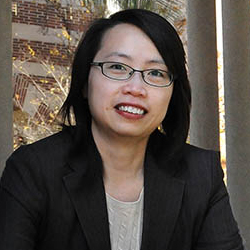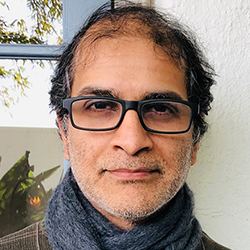


Menu
close



Home › Forums › Workshops › Cultural Preservation And Sustainability In China , Oct. 1, 2022 › Speakers
Speakers:
Buddhist Cave Temples as World Heritage Sites in China
Sonya Lee, University of Southern California
 Sonya Lee is a professor of art history, East Asian languages and cultures and religion. She also heads the USC East Asian Studies Center. Prof. Lee published Temples in the Cliffside: Buddhist Art in Sichuan earlier this year. She's also the author of Surviving Nirvana: Death of the Buddha in Chinese Visual Culture (2010) and is editor-in-chief for the forthcoming Grove Encyclopedia of Asian Art, a multi-volume work. Prof. Lee’s research has been supported by a number of grants, including ones from the National Gallery of Art and the American Council of Learned Societies.
Sonya Lee is a professor of art history, East Asian languages and cultures and religion. She also heads the USC East Asian Studies Center. Prof. Lee published Temples in the Cliffside: Buddhist Art in Sichuan earlier this year. She's also the author of Surviving Nirvana: Death of the Buddha in Chinese Visual Culture (2010) and is editor-in-chief for the forthcoming Grove Encyclopedia of Asian Art, a multi-volume work. Prof. Lee’s research has been supported by a number of grants, including ones from the National Gallery of Art and the American Council of Learned Societies.
Urban heritage and ritual space in Shenzhen
Timothy Oakes, University of Colorado
 Tim Oakes teaches geography and directs the Henry Luce Foundation-funded China Made project examining Asian infrastructures and the China model of development. He headed CU's Center for Asian Studies for a decade.
Tim Oakes teaches geography and directs the Henry Luce Foundation-funded China Made project examining Asian infrastructures and the China model of development. He headed CU's Center for Asian Studies for a decade.
This talk will explore the ways urban villages (or, ‘villages-in-the-city’ 城中村) have been manufacturing a heritage landscape in a context of precarious existence within the city of Shenzhen. Heritage has become a powerful line of defense for the preservation of urban villages and their until-recently unheralded contributions to the development of a sustainable urban fabric within China’s rapidly expanding cities. While we might therefore view these newly-built heritage landscapes as strategic spaces of place branding, they are also important ritual spaces of lineage-based territorial identity. Rather than viewing such spaces as holdouts left over from the rural ways of life that preceded urbanization, I propose we understand them as integral to urbanization itself. Instead of looking for traditional ritual spaces resisting the inevitable onslaught of the city, where the vestiges of a seemingly more authentic and rural landscape persists, we might instead consider these new heritage landscapes of reconstructed urban villages as a new kind of ritual space. This approach then leads us to consider how Shenzhen remains a city of villages and how an increasingly visible landscape of heritage in these villages reinforces their ongoing presence as ritual spaces.
Shaping the Post-industrial City: Lessons from China
Vinayak Bharne, University of Southern California
 Vinayak Bharne teaches in the architecture, urban design and heritage conservation programs. He also director of design at Moule & Polyzoides. Prof. Bharne's projects have won a variety of awards, including from the U.S. Environmental Protection Agency and the American Planning Association. He is the author of Zen Spaces & Neon Places (2014) and editor of many volumes, including The Routledge Companion to Global Heritage Conservation (2019) and The Emerging Asian City (2013).
Vinayak Bharne teaches in the architecture, urban design and heritage conservation programs. He also director of design at Moule & Polyzoides. Prof. Bharne's projects have won a variety of awards, including from the U.S. Environmental Protection Agency and the American Planning Association. He is the author of Zen Spaces & Neon Places (2014) and editor of many volumes, including The Routledge Companion to Global Heritage Conservation (2019) and The Emerging Asian City (2013).